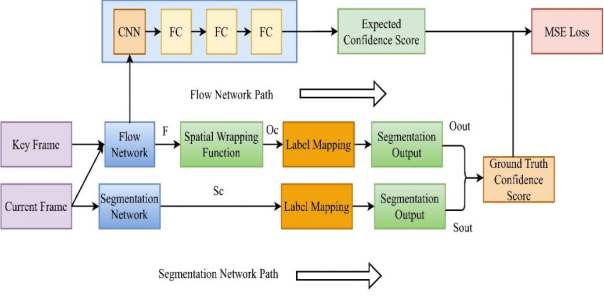Video Semantic Segmentation Network with Low Latency Based on Deep Learning
Main Article Content
Abstract
Recently, new advances in deep learning algorithms have yielded some fascinating results in the field of computer vision technology. As a result, it can now perform activities that formerly required the use of human vision and the brain. Classification, object identification, and semantic segmentation have all seen substantial advancements in deep learning architecture in the last few years. For still images and movies, there has been a major advancement in the field of semantic segmentation. In practical uses like autonomous vehicles, segmenting semantic video continues to be difficult due to high-performance standards, the high cost of convolutional neural networks (CNNs), and the significant need for low latency. An effective machine-learning environment will be developed to meet the performance and latency challenges outlined above. The use of deep learning architectures like SegNet and FlowNet2.0 on the CamVid dataset enables this environment to conduct pixel-wise semantic segmentation of video properties while maintaining low latency. As a result, it is ideally suited for real-world applications since it takes advantage of both SegNet and FlowNet topologies. The decision network determines whether an image frame should be processed by a segmentation network or an optical flow network based on the expected confidence score. In conjunction with adaptive scheduling of the key frame approach, this technique for decision-making can help to speed up the procedure. Using the ResNet50 SegNet model, a mean Intersection on Union (IoU) of "54.27 percent" and an average frame per second of "19.57" were observed. Aside from decision network and adaptive key frame sequencing, it was discovered that FlowNet2.0 increased the frames processed per second9(fps) to "30.19" on GPU with a mean IoU of "47.65%". Because the GPU was utilized "47.65%" of the time, this resulted. There has been an increase in the speed of the Video semantic segmentation network without sacrificing quality, as demonstrated by this improvement in performance.
Article Details
How to Cite
Gowda D V, C., & Kanagavalli, R. (2023). Video Semantic Segmentation Network with Low Latency Based on Deep Learning. International Journal of Communication Networks and Information Security (IJCNIS), 15(3), 209–225. https://doi.org/10.17762/ijcnis.v15i3.6266
Issue
Section
Research Articles

This work is licensed under a Creative Commons Attribution-NonCommercial-ShareAlike 4.0 International License.

